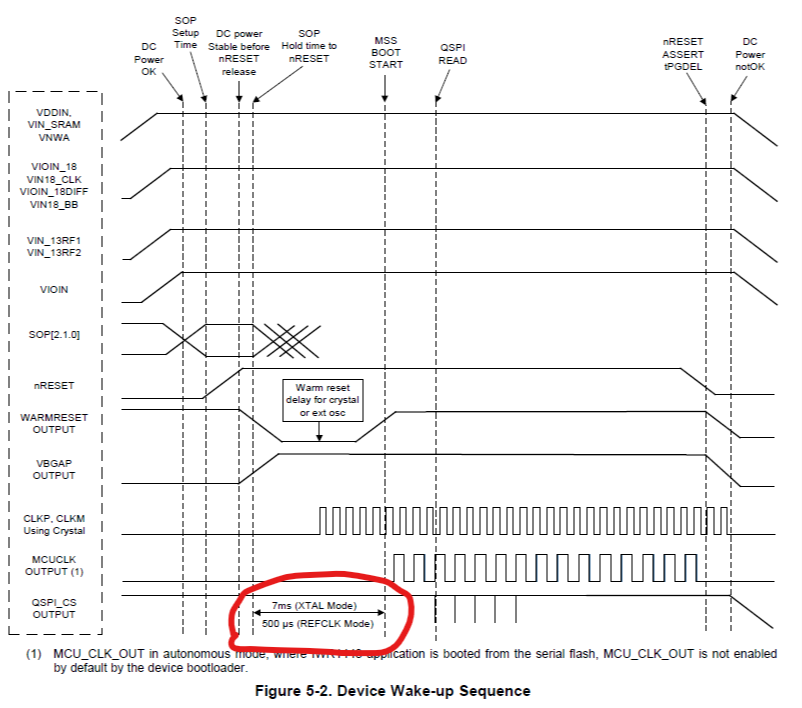Hi,
in the datasheet of the IWR1443 (p. 26 in Rev. C) figure 5-2 is showing the wake-up sequence and its timings.
This figure shows that the wake-up is about 6.5ms faster when using an external oscillator instead of a crystal at the reference input.
During our measurements we didn't see such an improvement. Do we need to do any further software modification to see this timing improvement?
Thanks and best regards,
Robert Storch


